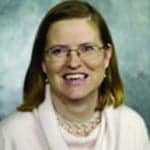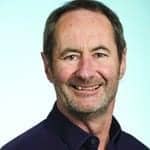Inside Clinical Research | April 2016 Hearing Review
The definition, etiology, signs, symptoms, treatment, and outcomes of auditory processing (AP) and Auditory Processing Disorders (APDs) have been reasoned and debated for more than 80 years. Despite a well-attended history, there is little agreement on the definition, diagnosis or treatment of APDs in 2016. Indeed, despite almost a century of analysis and more than 1.3 million citations on Google (January 2016), APDs remain universally ill-defined and poorly understood.
The most common signs and symptoms attributed to APD include listening difficulties without hearing loss, inattention, daydreaming, less-than-expected academic achievement, and more. These signs/symptoms are often attributed to APD, but clearly they are not exclusive to APD. That is, they may represent primary (ie, global) problems manifesting as APD, or a multitude of secondary problems also manifesting as APD.
Ideally, the diagnosis of APD should indicate a problem processing auditory information within the traditionally recognized central auditory nervous system (CANS). However, if the primary problem lies beyond the auditory cortex, such as cognitive processing, the diagnosis of APD is trumped by a more prominent differential diagnosis—including specific language impairment, dyslexia, attention deficit/hyperactivity disorder (AD/HD), intellectual impairment, and perhaps more.
Further, the lack of standard metrics used to measure APD is problematic. Specifically, there are no universally accepted diagnostic criteria, test batteries, or intervention strategies for APDs. Likewise, there are no universally agreed-upon descriptions of how one fails an APD battery.
The current American Academy of Audiology (AAA, 2010) guideline states one is considered to have failed an APD screening if the resultant scores on (any) two AP tests fall two or more standard deviations (SDs) below the mean for at least one ear.1 The British Society of Audiology (BSA, 2011) suggested that at least one test should use non-speech stimuli.2 The American Speech Language Hearing Association (ASHA, 2005) stated performance deficits of at least two standard deviations below the mean on two or more tests or at least three standard deviations below for one test with a report of “significant functional difficulty” should indicate an APD failure.3
In this article, our goal is to explore and elaborate on the contemporary literature, issues, controversies, questions, and dilemmas related to APDs.
A Brief Review of a Long History
In 1926, Henry Head described “word deafness” as the inability to understand spoken words “much like listening to a language one does not speak; the words simply have no meaning.”4 Head suggested a deficit in auditory perception, distinct from a higher order language processing disorder such as aphasia or amnesia. Jerger4 notes that, in 1952, Myklebust reported “A certain number of young children have disturbances of auditory perception without symbolic language disorders…” and these children “…cannot listen…they cannot direct their attention selectively to an expected sound…” Myklebust noted that, for these children, the auditory environment does not consist of a multitude of individual sounds; instead, their auditory world is a conglomerate in which all sounds have equal weighting, and all are foreground. Myklebust did not insist that these disorders must be “auditory specific.” Indeed, according to Jerger, the early use and development of dichotic tests for APD were based on adults with verified brain lesions in the 1970s. Interest quickly developed as to how one might use those tests to evaluate children suspected of having an APD.
The idea that some children might have an APD despite normal hearing sensitivity spread like wildfire in the 1970s and 1980s. Other tests of auditory performance were developed and the rationale (per Jerger) often appeared to be: If people with known injuries of the auditory system performed in one way, and if others performed the same way, a similar injury might be suspected.
Of course, a similar injury may indicate a similar process or protocol, but it is not mandated. For example, if someone has a broken arm resulting from a skiing accident while someone else has a broken arm from a tumble down the steps, both events resulted in broken arms. However, it does not mean skiing or steps cause broken arms, and it doesn’t mean the two victims had similar processes or experiences at all, even though they both have broken arms. That is, the injury is similar, but how one acquired the injury is very different from the other and the warnings to avoid future similar injuries would be different, based on how the specific accident occurred.
Contemporary APD Issues
Undeniably, the human auditory system is an exquisitely complex and a superbly redundant sensory system. Every process within the auditory system is critical and interdependent upon every other system, including non-auditory processes such as attention, cognition, working memory, quality and quantity of neural processing, and more.5,6 Indeed, a failure in any one (or more) of these systems can lead to apparent manifestations or disruptions in the same (or remaining) systems.
Specifically, when hearing (the ability to perceive sound) and listening (the ability to apply meaning to sound) ability are apparently inconsistent, it is the role of the audiologist to discover the basis of the inconsistency. In the presence of inconsistent audiometric findings, the challenge is to describe or define the exact nature of—or localize the site of—the suspected lesion or malfunction. However, every major mechanism within the auditory system is critical and dependent on every other major mechanism and an intact peripheral mechanism. It has become abundantly clear that cognition, language, and attention are not only tightly intertwined, but also closely integrated with auditory perception.6,7 Banai and Kraus8 refer to such a holistic view of auditory perception as an “auditory-cognitive system.”
Unfortunately, APD tests are mostly verbal. Hall9 noted verbal test items (such as words or sentences) and verbal responses are very much “linguistically loaded.” That is, an APD test based on words (as stimuli and response) makes it almost impossible to distinguish between APD and language disorders. He suggested it would be more useful to use non-linguistic tests, such as temporal tests, gap detection, and others, to better capture unique auditory processing issues, without the confounds of language. This sentiment was echoed by Dawes10 who reported any test using speech stimuli cannot rely solely on the perceptual (ie, auditory) stage. That is, tests using speech stimuli (by definition) involve phonological processing—which is naturally shaped by language experience.
Burkard11 suggests that divisiveness about APD is not a bad thing, as growing pains often accompany growth. He argues that cognitive and linguistic factors necessarily influence APD test results. Therefore, it seems we should accept that those results do not uniquely reflect an exclusively auditory phenomenon.
Dawes and colleagues12 report “serious shortcomings” with respect to APD assessment and identification. They found that the diagnosis a child receives may vary based on the particular professional consulted. That is, if a specific child with fixed signs and symptoms were to consult an audiologist, a speech-language pathologist, and a pediatrician, the child may be diagnosed with APD, a language disorder, and ADD/ADHD, respectively. Further, they note that distinguishing children based on APD, dyslexia, or other disorders is likely counterproductive as these labels tend to focus attention on one issue, while multiple issues may be present and would benefit from attention.
Ferguson, Hall, Riley, and Moore13 report the lack of a “gold standard” APD diagnostic test battery, thus facilitating a plethora of “unvalidated tests.” Indeed, they suggested “poor attention” may be a significant factor with regard to children who have listening difficulty. Similar to Dawes et al,12 they also reported “the children were differentially diagnosed based on their referral route rather than on actual differences.”
Dillon et al14 suggest focusing on the diagnosis and management of “listening difficulties.” That is, the authors note that every clinician, clinic, and country adopts their own APD test battery, and when “some pre-determined number of the tests are aberrant by more than some predetermined amount, the patient is diagnosed as having APD.” Further, Dillon and colleagues state there is no way to determine “the sensitivity and specificity of the test for that APD, as there is no absolute gold standard against which the test results can be compared.” They point out that, mathematically, as the size of the APD test battery increases, so too does the probability of a failure, often for reasons unrelated to the patient’s real-life communication ability.
Wilson and Arnott15 reported that, as one progresses from the strictest to the more lenient APD diagnosis criteria, anywhere from 7% to 96% of the 150 children would be classified as having APD. This leads them to state “calls to abandon the use of APD as a global label should be supported.”
Wilson and Arnott15 report the diagnosis of APD generally means the person suspected of having APD has scored two or more standard deviations below the mean, on two or more tests of APD. However, they importantly note there exists no “universally accepted set of diagnostic criteria for APD.” As such, Wilson and Arnott performed a retrospective analysis of 150 children with normal hearing, ranging in age from approximately 7 to 15 years, across multiple APD tests (including low pass filtered speech, two-pair dichotic digits, competing sentences, and more). After the test results were gathered, each child was assessed using AAA, ASHA, and BSA criteria,1-3 and they were also assessed using six other APD criteria. Wilson and Arnott reported that, as one progresses from the strictest to the more lenient APD diagnosis criteria, anywhere from 7% to 96% of the 150 children would be classified as having APD. This leads them to state “calls to abandon the use of APD as a global label should be supported.”
DeBonis16 reports that auditory, cognitive, and language mechanisms are often engaged simultaneously in a person who is processing spoken language. He notes “the reality of CAPD as a diagnostic construct is still far from any scenario that will put an end to the ongoing questioning of both its existence and its value…” Debonis reports APD is influenced by non-auditory factors (memory, attention, language, executive function), and the lack of agreement with respect to performance criteria (to diagnose CAPD) is a significant issue. He notes the effectiveness of typical APD intervention programs to improve communication ability “has not been established,” and further, “routine use of CAPD test protocols cannot be supported…” DeBonis adds it’s ironic that the popularity of APD “continues to grow on the unsupported notion that auditory processing deficits cause a range of global language and listening deficits.”
Contemporary Neuroscience Issues
Recently, the term “synaptopathy” has been applied to infer a dysfunction within synaptic structure and/or function. There is substantial evidence to support the theory of synaptopathy originating from a neural interruption between the auditory neurons and sensory hair cell.
It is not a far-fetched notion that synaptopathy would pre-dispose individuals who have normal hearing pure-tone thresholds to experience significant difficulties in communication. Consequently, a child with such a condition could experience limited academic success. The unpredictability of inconsistent or minutely localized synaptic dysfunction could render an individual with Invisible Hearing Loss (IHL, hidden hearing loss or hidden hearing impairment) an auditory perceptual or auditory processing problem.
Some researchers point to an “invisible” or “hidden” inner hair cell (IHC) fiber dysfunction in which detection of pure-tones in quiet (as measured via normal audiogram or auditory brainstem response, ABR) are generally preserved. However, in some cases such as auditory neuropathy spectrum disorder (ANSD), normal pure-tone thresholds are present, yet acoustic reflexes and the ABR are absent, and the ability to understand in quiet and in the presence of competing and/or complex signals is compromised.17,18 Thus, the term “invisible (hidden) hearing loss” was coined, which confounds the overreliance of pure-tone behavioral results in determining hearing and listening perception abilities and deficits.
Indeed, scientists continue to explore the neurobiological basis for inconsistent audiometric findings through electrophysiology, neuroimaging, and behavioral findings of APD. Functional measures of neuro-imaging, electrophysiology, otoacoustic emissions (and more) have successfully demonstrated atypical hemisphere asymmetries, inefficient inter-hemispheric transfer of auditory/language signals, reduced amplitude responses19-22 and reduced abilities to efficiently use interaural loudness (ie, acoustic spatial) cues.23
Over the decades, a variety of behavioral perceptual tests have been incorporated as part of a diagnostic AP battery. The testing battery choice is determined according to individual behaviors and complaints within specific categories. These categories often include auditory discrimination, binaural interaction, low-redundancy speech, temporal processing, dichotic tests, and more. Each category taps into specific processes ranging from binaural integration, fusion, separation, interaction, temporal ordering, frequency and duration discrimination, temporal resolution, and localization/lateralization. Depending upon results, assumptions are drawn about the site of dysfunction.
Although behavioral test offerings have changed very little over years, a few newer behavioral tests are showing promise. Considered a test of spatial processing, the Listening in Spatialized Noise-Sentences (LiSN-S) Test23,24 creates a computer-driven three-dimensional listening task under headphones. In brief, subjects try to locate the origin of sound in space. In their 2006 report,23 children suspected of having APD were unable to successfully identify “where to listen.” That is, they were not able to use spatial information as well as children in the non-APD (ie, control) group. The authors concluded “Results on the LiSN indicate that of those children with APD, there may be a high proportion who have deficits in the binaural processing mechanisms that normally use the spatial distribution of sources to suppress unwanted signals…” Not only has the unique approach with LiSN-S proven to be effective in identifying spatial processing (hearing) disorders, but shows promise in use for monitoring performance while receiving remediation for APD.
Another relatively new addition in the APD assessment is the Gaps in Noise (GIN) test,25 which is a clinically based recorded temporal resolution test with high precision and small variability.
Listening Disorders
There is no clear evidence that children with listening difficulties (LiD) have a specific problem with processing in the CANS. Children with LiD and normal audiological profiles are generally given a standard battery of tests for APD.26 The most common battery27 consists of four tests; dichotic digits (DD), competing sentences (CS), frequency pattern (FP) and low-pass filtered speech (LPFS). Of note, these tests are for children aged 7 years and older, making them incompatible with earlier diagnosis and intervention.
Moore et al28 presented a detailed critique of this test battery. Briefly, three of the tests (DD, CS, LPFS) involve both a high language and cognitive load, so poor performance may reflect cognitive issues—not necessarily a sign of impaired CANS function. Performance on the other non-speech based FP test also has a high cognitive load. Children must indicate a sequence of low- and high-pitched tones by naming or humming. The task thus requires identification, labeling, memory, and verbal reproduction of the tones and the tone sequence. Performance on each of these tests may indeed be impaired by a processing disorder in the CANS, but may also represent a normal CANS with limited cognitive abilities, even if the child has an IQ within the “normal” range or lacks a diagnosis of AD/HD. Administering APD tests in isolation, without considering the complexity of neural processing involved during active listening, including the modulating effects of cognition, may result in misdiagnosis and delays in appropriate intervention.
Tomlin et al29 reported contemporary clinical APD test battery scores are generally poorly correlated with known and suspected real-life consequences of impaired listening. Of note, non-verbal IQ and gender were determined to be the best predictors of parent, teacher, and child (self) assessed listening ability. Further, cognitive scores and listening ability correlated best with reading fluency, which turned out to be a reasonable indicator of general academic achievement. Auditory processing, as assessed with their AAA/ASHA-recommended APD test battery, did not predict either listening or reading ability. In conclusion, they found tests of AP are insensitive to the main factors (signs, symptoms, etc) which lead caregivers to seek help: listening difficulties and poorer-than-expected academic achievement.
Electrophysiology and APD
Recommended electrophysiological tests have included the ABR, middle latency response (MLR), and the cortical P300 and mismatch negativity (MMN). There are no agreed criteria as to when electrophysiology should be included in the clinical evaluation of APD. There is also little evidence to support the inclusion of these tests in cases of normal audiometry, with the exception of the ABR when used to confirm ANSD.
Several studies have also reported abnormalities of the speech-evoked ABR associated with a variety of learning problems that include impaired auditory perception,30 and there is new interest in the use of click-evoked Wave I amplitude to detect “hidden hearing loss.”31 Neither of these findings is well enough established to warrant routine clinical use.
Intervention
Current intervention strategies32 can be divided into three main categories, namely:
1) Modifying the listening environment;
2) Auditory training, and
3) Compensatory strategies.
Architectural interventions to reduce reverberation and noise improve the clarity of the acoustic signal. Assistive listening devices, also known as remote microphone technology and wireless communication devices, deliver input from a remote microphone to the ear. They reduce the impact of background noise and reverberation by increasing the signal-to-noise ratio and have been found effective in at least one learning disorder (dyslexia) related to listening difficulties.30
Auditory training, together with other forms of “brain training,” has for some years been touted as an effective intervention for APD. However, while currently available computer apps provide robust “on-task” learning of the exact skill trained, there appears to be little transfer of learning to untrained tasks or skills.33 Two other common forms of interactive “auditory training,” learning music (including singing) and child-parent (“dyadic”) reading, both appear to provide some generalized benefit for aspects of APD, with strong scientific backing. However, to our knowledge, neither is currently used or recommended as a clinical intervention for APD.
Conclusions
1) Present clinical practice in APD evolved from the perspective of audiologists who understand hearing problems derived from a malfunction of the ear or of the central auditory nervous system (CANS). However, the audiologist typically has less knowledge regarding listening problems having other origins.
2) Developmental APD should be viewed as a part of childhood learning problems which may closely overlap results when measured with speech-based tests. Other more commonly used designations (eg, language impairment, dyslexia, AD/HD, ASD) should take precedence where appropriate.
3) It is our opinion that rather than labelling a person with APD, it makes more sense to thoroughly and succinctly describe the presenting hearing and/or listening problem, and to outline an evidence-based approach to address the specific needs of the particular patient.
4) Audiology (and teachers and parents) often attribute listening problems to impaired processing in the CANS when audiograms are normal. However, contemporary evidence suggests most such problems are due primarily to language and other cognitive processing outside the traditional auditory system.
5) Most currently used tests of APD are tests of language and attention that lack sensitivity and specificity.
6) To test AP specifically, we recommend measures of auditory temporal, spectral, and spatial processing.
7) We should develop a smaller battery of tests that are well-validated, normalized, and relevant to the problems reported by our clients. DeBonis16 suggests four such measures (two speech-in-noise tests and two questionnaires).
8) A top priority for further research, discussion, and clinical practice should be intervention. New technologies, such as remote microphone devices, are very promising, but require further investigation. Traditional techniques, such as “dyadic” reading between caregivers and children, as well as music lessons, should become more familiar to, and recommended by, audiologists.
9) It is unacceptable that children with listening problems are neither identified nor treated before age 7. Pediatric audiology outcomes (hearing aid and cochlear implant fittings) clearly demonstrate that early identification and treatment provide maximal results.
References
-
American Academy of Audiology (AAA). Practice guidelines for the diagnosis, treatment, and management of children and adults with central auditory processing disorder (CAPD). August 2010. Available at: http://www.audiology.org/publications-resources/document-library/central-auditory-processing-disorder
-
British Society of Audiology (BSA). Auditory processing disorder (APD). March 2013. Available at: http://www.thebsa.org.uk/wp-content/uploads/2014/04/BSA_APD_PositionPaper_31March11_FINAL.pdf
-
American Speech Language Hearing Assn (ASHA). (Central) auditory processing disorders: Working Group on Auditory Processing Disorders. 2005. Available at: http://www.asha.org/policy/TR2005-00043
-
Jerger J. The concept of auditory processing disorder: A brief history. In: Cacace AT, McFarland DJ, eds. Controversies in Central Auditory Processing Disorder. San Diego: Plural Publishing:2009.
-
Wright BA, Fitzgerald MB. The time course of attention in a simple auditory detection task. Percept Psychophys. 2004;66: 508/16.
-
Moore DR, Ferguson, MA, Halliday A, Riley LF. Frequency discrimination in children: perception, learning and attention. Hear Res. 2008;238(1-2):147-154.
-
Beck DL, Weinstein BE, Harvey M. Issues in cognitive screenings by audiologists. Hearing Review. 2016;23(2):36-38.
-
Banai K, Kraus N. Auditory processing (disorder): An intersection of cognitive, sensory, and reward circuits. In: Musiek F, Chermak, eds. Handbook of Central Auditory Processing Disorders: Vol 1. Auditory Neuroscience and Diagnosis. 2nd Ed. San Diego: Plural Publishing;2014:191-210.
-
Hall JW. Moving toward evidence-based diagnosis and management of APD in children. Hear Jour. 2007; 60(4):10-14.
-
Dawes P. The SCAN-A in testing for auditory processing disorder in a sample of British adults. Int J Audiol. 2011;50:107-111.
-
Burkard RF. Foreword. In: Cacace AT, McFarland DJ, eds. Controversies in Central Auditory Processing Disorder. San Diego: Plural Publishing;2009.
-
Dawes P, Sirimanna T, Burton M, Vanniasegaram I, Tweedy F, Bishop DVM. Temporal auditory and visual motion processing of children diagnosed with auditory processing disorder and dyslexia. Ear Hear. 2009;30(6):675-686.
-
Ferguson MA, Hall RL, Riley A, Moore DR. Communication, Listening, Cognitive, and Speech Perception Skills in Children With Auditory Processing Disorder (APD) or Specific Language Impairment (SLI). J Sp Lang Hearing Res. 2011;54(2):211–227.
-
Dillon H, Cameron S, Glyde H, Wilson W, Tomlin D. An opinion on the assessment of people who may have an auditory processing disorder. J Am Acad Audiol. 2012;23:97-105.
-
Wilson WJ, Arnott W. Using different criteria to diagnose central auditory processing disorder—How big a difference does it make? J Sp Lang Hear Res. 2013;56:63-70.
-
DeBonis DA. It is time to rethink central auditory processing disorder protocols for school-aged children. Am J Audiol. 2015;24(6):124-136.
-
Kujawa SG, Liberman MC. Synaptopathy in noise exposed and aging cochlea: Primary neural degeneration in acquired sensorineural hearing loss. Hear Res. 2015;330:191-199.
-
Lobarinas E, Salvi R, Ding D Insensitivity of the audiogram to carboplatin induced inner hair cell loss in chinchillas. Hear Res. 2013;302:113-120.
-
Bellis T, Nicol T, Kraus N. Aging effects of hemispheric asymmetry in the neural representation of speech sounds. J Neurosci. 2000;20(2):791-797.
-
Chermak GD, Musiek FE. Neurological substrate of central processing deficits in children. Curr Pediatr Rev. 2011; 7(3):241-251.
-
Kompus K, Specht K, Ersland et al. A forced-attention dichotic listening fMRI study on 113 subjects. Brain Language. 2012;121(3):240-247.
-
Tremblay K, Kraus N, McGee T. Central auditory plasticity: Changes in the N1-P2 complex after speech-sound training. Ear Hear. 2002;22(2):79-90.
-
Cameron S, Dillon H, Newall P. The listening in spatialized noise test: an auditory processing disorder study. J Am Acad Audiol. 2006;17(5)[May]:306-20.
-
Cameron S, Dillon H. Listening in Spatialized Noise-Sentences test (LISN-S) (Version 1.206) [Computer software]. Murten, Switzerland: Phonak Communications AG;2009.
-
Musiek FE, Shinn JB, Jirsa R, et al. GIN (Gaps-in-Noise) test performance in subject with confirmed central auditory nervous system involvement. Ear Hear. 2006;26(6):608- 618.
-
Weihing J, Guenette L, Chermak GD, Brown M, Ceruti J, Fitzgerald K, Geissler K, Gonzalez J, Brenneman L, Musiek FE. Characteristics of pediatric performance on a test battery commonly used in the diagnosis of central auditory processing disorder (CAPD). J Am Acad Audiol. 2015;26:652-669.
-
Emanuel DC. The auditory processing battery: Survey of common practices. J Am Acad Audiol. 2002;13,93-117.
-
Moore DR, Rosen S, Bamiou DE, et al. Evolving concepts of developmental auditory processing disorder (APD): A British Society of Audiology APD special interest group “white paper.” Int J Audiol. 2013;52(1):3-13.
-
Tomlin D, Dillon H, Sharma M, Rance G. The Impact of Auditory Processing and Cognitive Abilities in Children. Ear Hear. 2015;36(5):527-542.
-
Hornickel J, Zecker S, Bradlow A, Kraus N. Assistive listening devices drive neuroplasticity in children with dyslexia. Proc Nat Acad Sci. 2012;109(41): 16731–16736.
-
Stamper GC, Johnson TA. Auditory function in normal-hearing, noise-exposed human ears. Ear Hear. 2015 Mar-Apr;36(2):172-84.
-
Campbell N, Bamiou D-E . & Sirimanna T. Current progress in auditory processing disorder. ENT Audiol News. 2012;21:86 – 90
-
Murphy CFB, Moore DR, Schochat E. Generalization of auditory sensory and cognitive learning in typically developing children. PLoS ONE. 2015;10:e0135422
Recommended Reading
Dillon H, Cameron S, Tomlin D, Glyde H. Comments on “Factors influencing tests of auditory processing: a perspective on current issues and relevant concerns” by Tony Cacace and Dennis McFarland. J Am Acad Audiol. 2014;25(7):699-703.
Faure PA, Fremouw T, Cassedy JH, et al. Temporal masking reveals properties of sound-evoked inhibition in duration-tuned neurons of the inferior colliculus. J Neurosci. 2003;23:3052-3065.
Frisina RD, Karich KJ, Tracy TC, et al. Preservation of amplitude modulation coding in the presence of background noise by chinchilla auditory-nerve fibers. J Acoust Soc Am. 1996;99(1):475-490.
Moller AR. Hearing: Its Physiology and Pathophysiology. New York: Academic Press;2000.
Moore DR, Ferguson MA, Edmondson-Jones AM, et al. Nature of auditory processing disorder in children. Pediatrics. 2010;126:e382-e390.
Palmer AR, Rees A. The Auditory Brain. Oxford Handbook of Auditory Science, Vol 2. Oxford, UK: Oxford University Press;2010.
Rhode WS. Neural encoding of single-format stimuli in the ventral cochlear nucleus of the Chinchilla. Hear Res. 1998;117:39-56.
Rouiller EM. Functional organization of the auditory pathways. In: Ehrer G, Romand R, eds. The Central Auditory System. New York: Oxford University Press;1997.
Sanes DH, Woolley SM. A behavioral framework to guide research on central auditory development and plasticity. Neuron. 2011;72:912-929.
Spirou GA, May BJ, Wright DD, et al. Frequency organization of the cochlear nucleus. J Comparative Neurol. 1993;329:36-52.
Douglas L. Beck, AuD, is senior editor of “Inside Clinical Research” for The Hearing Review and is among the most prolific authors in audiology. In addition to his new duties at HR, Dr Beck is an associate professor of audiology at the University of Hawaii, and director of professional relations at Oticon Inc, Somerset, NJ.
Jackie L. Clarke, PhD, is a clinical professor at UT Dallas/Callier Center, a research scholar at the University Witwatersand, Johannesburg, South Africa, and is managing editor of the International Journal of Audiology.
David R. Moore, is director of the Communication Sciences Research Center at Cincinnati Children’s Hospital, and serves as a professor at the University of Cincinnati and the University of Manchester in the United Kingdom.
Correspondence can be addressed to Hearing Review or Dr Beck at: [email protected]
Original citation for this article: Beck DL, Clarke JL, Moore Dr. Contemporary Issues in Auditory Processing Disorders: 2016. Hearing Review. 2016;23(4):22.?
Image credits: Doug Beck; Jackie Clarke; David Moore; © Wavebreakmedia Ltd | Dreamstime.com








